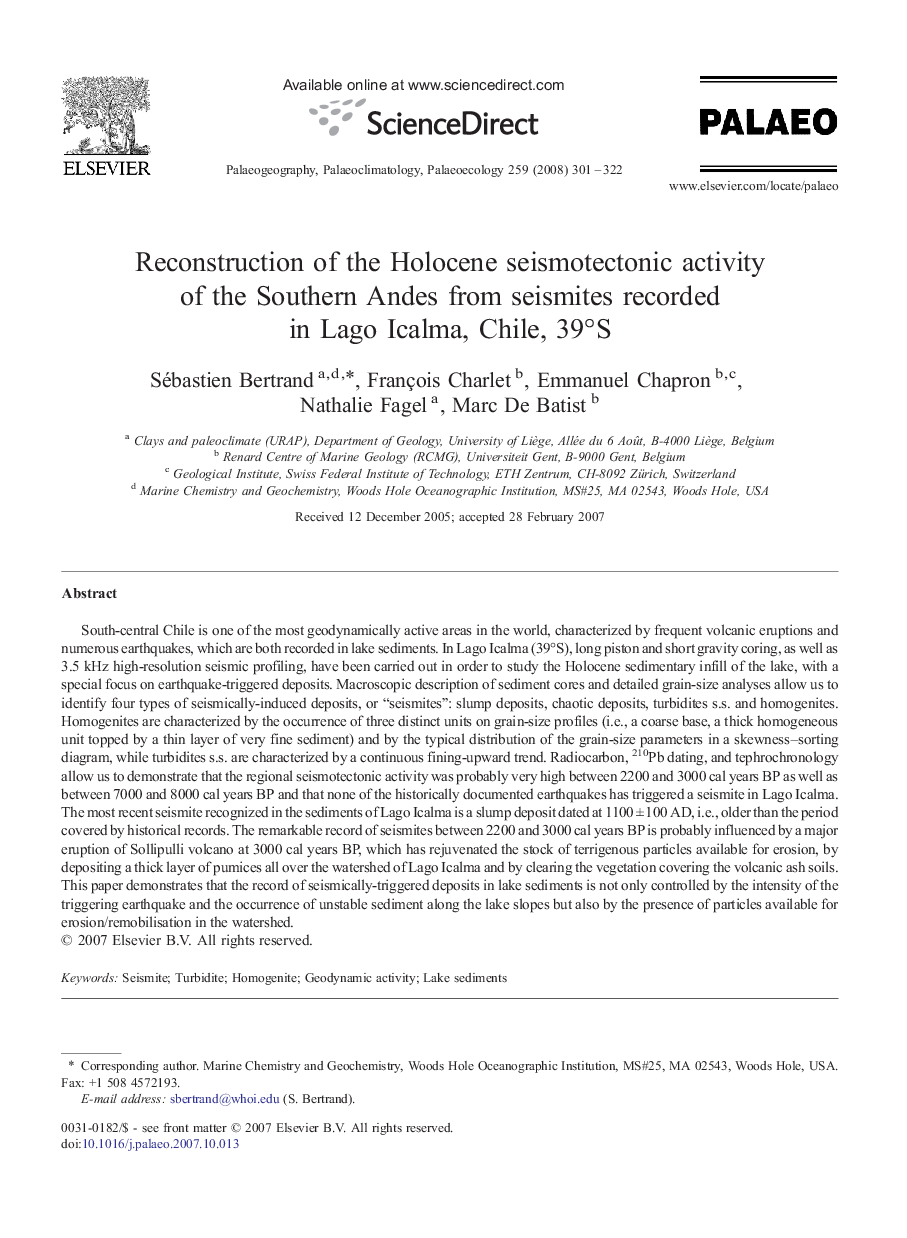| کد مقاله | کد نشریه | سال انتشار | مقاله انگلیسی | نسخه تمام متن |
|---|---|---|---|---|
| 4468653 | 1622335 | 2008 | 22 صفحه PDF | دانلود رایگان |

South-central Chile is one of the most geodynamically active areas in the world, characterized by frequent volcanic eruptions and numerous earthquakes, which are both recorded in lake sediments. In Lago Icalma (39°S), long piston and short gravity coring, as well as 3.5 kHz high-resolution seismic profiling, have been carried out in order to study the Holocene sedimentary infill of the lake, with a special focus on earthquake-triggered deposits. Macroscopic description of sediment cores and detailed grain-size analyses allow us to identify four types of seismically-induced deposits, or “seismites”: slump deposits, chaotic deposits, turbidites s.s. and homogenites. Homogenites are characterized by the occurrence of three distinct units on grain-size profiles (i.e., a coarse base, a thick homogeneous unit topped by a thin layer of very fine sediment) and by the typical distribution of the grain-size parameters in a skewness–sorting diagram, while turbidites s.s. are characterized by a continuous fining-upward trend. Radiocarbon, 210Pb dating, and tephrochronology allow us to demonstrate that the regional seismotectonic activity was probably very high between 2200 and 3000 cal years BP as well as between 7000 and 8000 cal years BP and that none of the historically documented earthquakes has triggered a seismite in Lago Icalma. The most recent seismite recognized in the sediments of Lago Icalma is a slump deposit dated at 1100 ± 100 AD, i.e., older than the period covered by historical records. The remarkable record of seismites between 2200 and 3000 cal years BP is probably influenced by a major eruption of Sollipulli volcano at 3000 cal years BP, which has rejuvenated the stock of terrigenous particles available for erosion, by depositing a thick layer of pumices all over the watershed of Lago Icalma and by clearing the vegetation covering the volcanic ash soils. This paper demonstrates that the record of seismically-triggered deposits in lake sediments is not only controlled by the intensity of the triggering earthquake and the occurrence of unstable sediment along the lake slopes but also by the presence of particles available for erosion/remobilisation in the watershed.
Journal: Palaeogeography, Palaeoclimatology, Palaeoecology - Volume 259, Issues 2–3, 24 March 2008, Pages 301–322